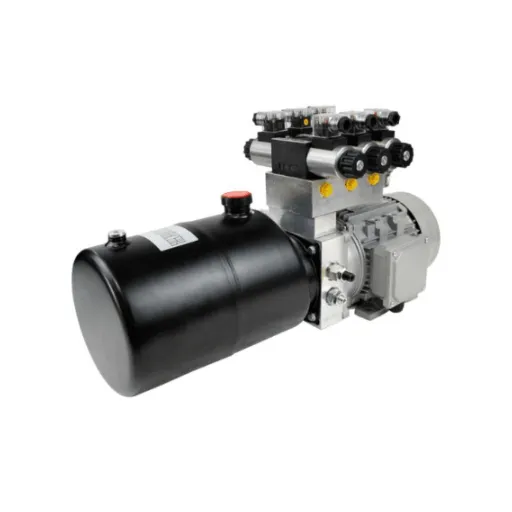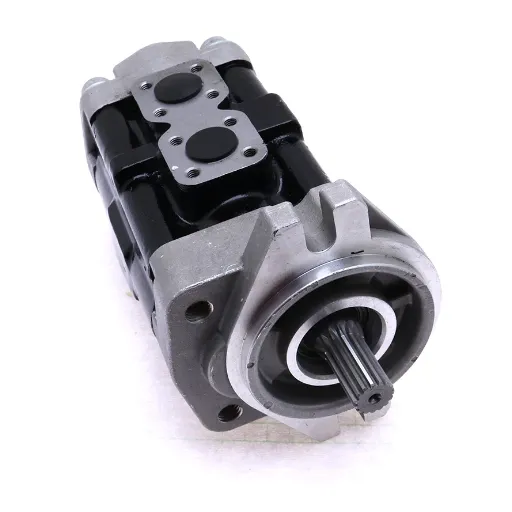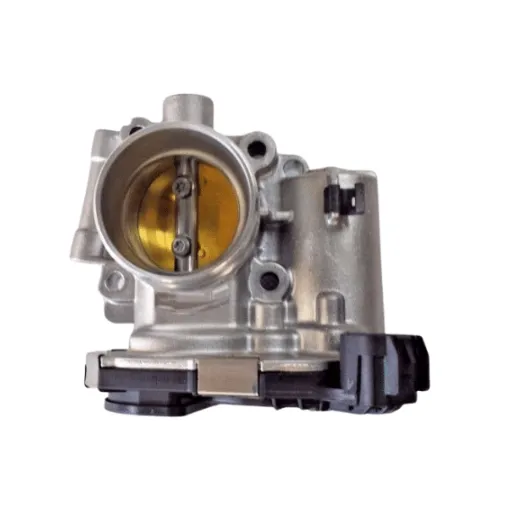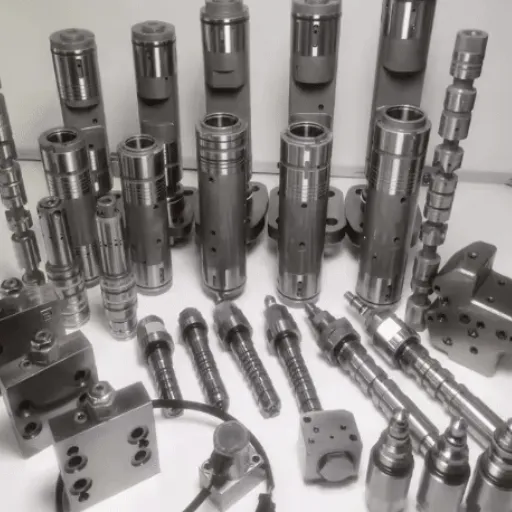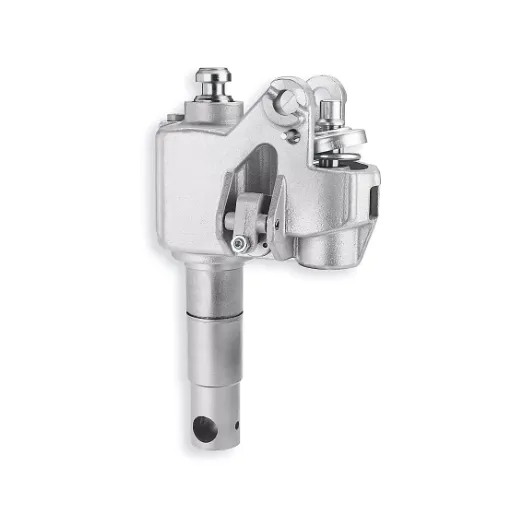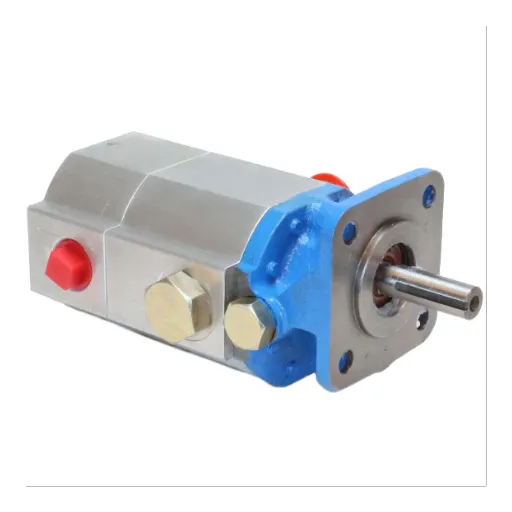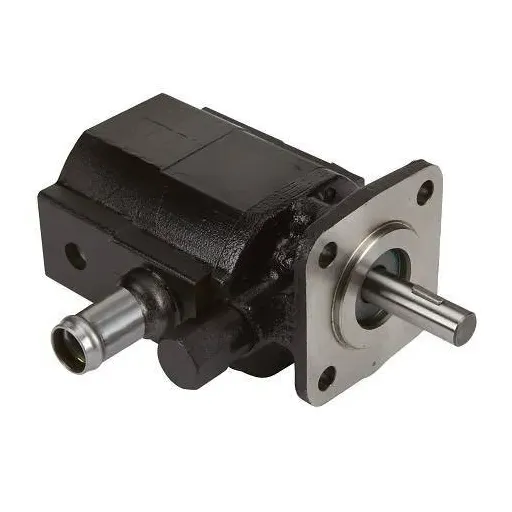Hydraulic pumps are critical in countless industrial and mechanical systems to transfer energy efficiently whenever they have to be on. And hence, the performance and durability of these systems depend on the optimization of the hydraulic power of the pump. The article thorough goes through the many advantages of hydraulic pump optimization, from saving on energy to operational costs to reliability of the system. If your goal is to reduce equipment downtime and maximize efficiency while still remaining green, pump optimization must be understood and implemented. We will discuss the foremost benefits and some technical considerations for maximizing hydraulic pump efficiency in the demanding applications of today.
Understanding Hydraulic Power and Efficiency
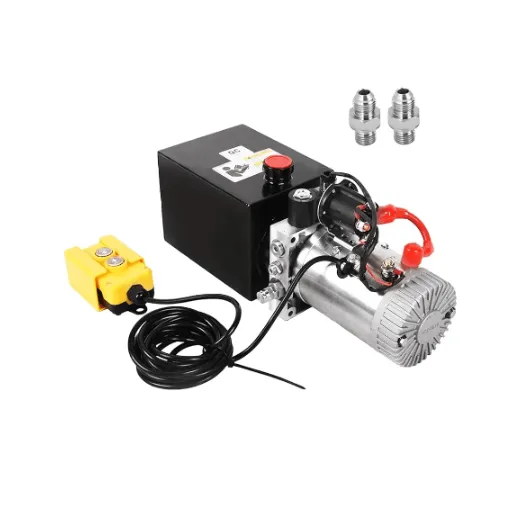
What is Hydraulic Power?
Hydraulic power is energy transmitted by means of pressurized fluid in the system to perform mechanical work. This principle works according to Pascal’s Law, which states that pressure exerted on a confined fluid is transmitted undiminished equally in all directions. Hydraulic systems then use this law to create force and motion and are thus essential to industrial automotive applications and heavy machinery.
The prime components of a hydraulic system are the prime mover (usually an electric motor or an internal combustion engine), the hydraulic pump, an actuator (cylinders or motors), and valves for control. The pump takes mechanical energy coming from the prime mover and converts it into hydraulic energy through pressurizing the fluid. Then this pressurized fluid is used by actuators to perform some activities under the control of valves. These activities, like lifting, pressing, or rotation, are actions of mechanical energy being performed.
Efficiency in hydraulic power systems is assessed by considering volumetric efficiency and mechanical efficiency, and the overall energy lost as heat generation and fluid leakage. Maximizing hydraulic power, therefore, means reducing all these kinds of losses, using quality components, and control systems that assure exactness and dependability. Understanding hydraulic power is fundamental to the design and operation of a system to meet the stern demands of present-day industrial applications.
Importance of Efficiency in Hydraulic Systems
Hydraulic systems are concerned with performance, energy efficiency, operational costs, and efficient energy transfer between the power source, from the hydraulic pump to the actuator, to minimize energy losses in the form of heat generation due to friction in fluids. In industrial situations, since the systems operate most of their time under loading, efficiency becomes the major criterion for sustainability and cost-effectiveness.
Higher efficiency hydraulics increase the reliability of the equipment and, thus, its service life span. System efficiency reduces the failure rates in mechanical systems and unplanned downtimes, thereby avoiding expensive repairs associated with it, as it saves losses in energy and wear on the components. For instance, by using a method to maintain fluid pressure and ensure proper flow, potential overloading of the components can be avoided, thus prolonging the life of the system. Regular maintenance and implementation of state-of-the-art monitoring technologies further add to the system’s performance and reliability.
Furthermore, efficiency drives the reduction of the carbon footprint associated with hydraulic equipment, thus contributing to environmental conservation. In this case, less energy consumption means a lesser requirement for fuel or electricity and, hence, reduced emissions of greenhouse gases. To fulfill strict environmental laws without compromising productivity, certain industries have now embraced energy-hungry hydraulic components such as variable-speed pumps and advanced control valves. Prioritizing efficiency, therefore, creates economic value for industries while also moving the world one step closer toward sustainability.
Key Components of a Hydraulic Pump System
One crucial component in a hydraulic pump system is that it consists of many components that together convert mechanical energy into hydraulic energy, with every part having a particular function that guarantees the system works efficiently and in a reliable manner.
- Hydraulic Pump: Being the principal element of the hydraulic system, this pump generates flow. It takes in hydraulic fluid from a reservoir and, through pressure, transfers energy from one place to another. There are various types of pumps, such as gear, vane, and piston. Each type has a particular application based on pressure and flow rate.
- Hydraulic Reservoir: Functioning primarily as a storage tank, it stores and supplies hydraulic fluid to the system while also dissipating heat, filtering the fluid, and separating air. Good reservoir design is paramount for achieving a steady flow while minimizing contamination-which in turn translates to longer life of the systems.
- Control Valves: Controlling valves control the flow, direction, and pressure of the hydraulic fluid. These valves include: pressure relief, directional control, and flow control, duties that afford more versatility and precision in the operation.
- Actuators: Actuators such as hydraulic cylinders and motors convert hydraulic energy into mechanical energy. Cylinders normally give linear motion, while hydraulic motors provide rotary motion, capable of performing a large range of mechanical tasks.
- Filters and Accumulators: Filters clean contaminants from the fluid, while accumulators store excess hydraulic energy for release during times of peak demand or smoothing out pressure variations within the system.
These, together, make an integral and efficient system capable of functioning through various operating conditions. Each part’s function and maintenance are vital to attain an optimal performance and long life.
Applications of Hydraulic Pumps in Various Industries
Hydraulic Systems in Manufacturing
Hydraulic systems contribute significantly to existing machinery and carry the tools needed for precise operations that the industry requires. The equipment associated with hydraulic systems undertakes high-force applications and repeatability in presses and injection molding machines, and stamping machines. Since they operate by transmitting power using an incompressible fluid, they are adept at producing consistent forces for tasks that require very high accuracy and efficiency.
Hydraulic press machines are intended for metal forming and plastic moldings by using the power of huge pressures that can reach tens of thousands of psi. The pressures generated are used to either form, mold, or cut peculiar materials. Hydraulic power units maintain smooth motion control in the assembly lines in support of automated systems that demand fine-tuned adjustments. The accumulator-assisted hydraulic circuits are also used in manufacturing processes to conserve energy by reducing power consumption during idle cycles.
This can be associated with the improved reliability and productivity of operations due to the advancements of hydraulics, including the introduction of precision proportional valves and real-time monitoring systems. Data procured from the condition monitoring sensors is utilized to predictively maintain equipment, hence reducing downtime and prolonging the equipment’s life. Given that their power output can be scaled and adjusted to production tasks, hydraulic systems continue to be among the primary pillars of industry manufacturing processes.
Hydraulic Pump Usage in Construction
Hydraulic pumps are widely utilized in the construction sector because such pumps perform conversion of mechanical energy into hydraulic energy efficiently, thus affording control with the utmost precision and greatest power density. In many heavy construction machineries like excavators, backhoes, and cranes, the pumps form the heart of the mechanism. These heavy machines require huge force and precision for lifting, digging, or moving construction materials. By applying pressure to the hydraulic fluid, they generate the required energy for carrying out the functions of lifting and moving construction materials; thus, they are needed for all operations concerning both small- and large-scale constructions. The conversion into different sizes required by different machinery and working conditions reiterates the importance of these pumps in this field.
According to the hydraulic pumps’ working principle, contemporary development has greatly enhanced the performance, efficiency, and reliability of hydraulic pumps when applied to construction. For instance, in variable displacement pumps, the operator can very precisely adjust the flow rate according to real-time needs so that energy loss is minimized and fuel economy is maximized in heavy equipment. Moreover, the installation of electronic controls and sensors into the hydraulic system provides for real-time performance monitoring. It then ensures that the system is run optimally, giving information on pressure levels, fluid temperature, and system efficiency. Equipment failure would more often be avoided due to these innovations, hence increasing the working life of construction machinery.
Then, hydraulic pumps contribute to the giant trend of sustainable construction cultures. By furnishing energy-efficient designs and thereby using less toxic or bio-based hydraulic fluids, these systems yield a limited environmental impact on the practice of building. Hybrid hydraulic systems have gained prominence, as electric motors complement conventional hydraulic power for realization: quieter operations and lower emissions. Hydraulic systems inherently have enhanced construction equipment and thus afford alternative thrusts to pushing environmentally friendly construction methods.
Applications in Agriculture and Transportation
Hydraulic power is necessary in these two industries because of its versatility, power, and efficiency. The following are the five important uses in agriculture and transport:
- 1
Tractor Implements and Attachments:
Hydraulic pumps are employed to power tractor implements such as ploughs, seeders, and harrows. Modern tractors use hydraulics to raise, lower, or otherwise adjust attachments. It has been studied that the hydraulic action in farm machinery has increased efficiency by almost 30%, thereby decreasing the time and labor needed in different agricultural operations. - 2
Irrigation Systems:
Hydraulic actuators and pumps in large systems generally control flow and pressure for precision irrigation. This organization ensures water delivery to huge fields while guaranteeing uniformity in water distribution. As per data, hydraulic irrigations save around 20% of water as compared to the country-typical gravity systems. - 3
Harvesting Equipment:
Hydraulic mechanisms power combine harvesters, balers, and harvesting devices for handling materials, lifting, and compressing. This leads to maximum productivity during the harvest periods, while also minimizing the downtime of machines. - 4
Commercial Transportation:
Those hydraulic elements, like the suspension system, are commonly found in buses and trucks for better ride comfort and handling of loads. While braking is done in commercial vehicles by air-over-hydraulic systems, the method increases reliability and guarantees quicker response. Safety-wise, these systems also serve to reduce wear on mechanical parts. - 5
Cargo Handling and Logistics:
To load and unload cargo in ports and logistics hubs, hydraulic lifts and cranes are needed. For example, forklifts that use hydraulics can handle loads of over 5,000 pounds while ensuring precise movement and stability. This application is crucial in ensuring that turnaround times in supply chain operations are quick enough to meet the needs of modern logistics.
Each of these applications stands as evidence of how hydraulic systems are indispensable to increasing productivity, sustainability, and operational efficiency in agriculture and transportation.
Advancements in Hydraulic Pump Technology
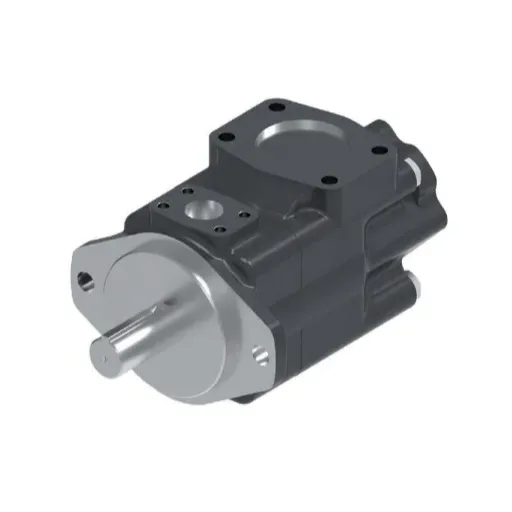
Innovations in Hydraulic Efficiency
Recent hydraulic pump technology advances tend to favor efficiency. As such, they consume less energy and are less polluting. Among many exciting developments has been the variable displacement pump, wherein fluid flow and pressure are varied with system demand. The very intense energy wastage in former fixed displacement pump systems put variable displacement pumps as one of the most dominant players in the field, from this energy usage point of view.
Advancements in materials technology have given rise to lightweight and durable components, enhancing pump performance while minimizing wear and tear. Composite materials in the pump housing are an instance of dispersing heat better and lowering the system’s weight. Alongside this, digital hydraulic systems comprising electronic controllers and sensors can now monitor hydraulic operation in real time, while precisely modulating it. Such a control system maintains efficiency while providing data for predictive maintenance, thereby eliminating downtime at a cost level.
Hydraulic fluids like biodegradable or water-based ones are generating more environmental sizzle to be aligned alongside these innovations. They minimize the hydraulic system’s effect on the environment while not compromising lubrication and performance. The incorporation of the latest innovations results in making hydraulic systems more adaptable, reliable, and efficient to cater to heavy-duty industrial applications, ranging from manufacturing to renewable energy.
New Trends in Hydraulic Pump Design
New developments in materials science and precision engineering are subject to the hydraulic pump’s design and must answer the modern industrial demands. One good example of this is the trend of smart sensing technologies in hydraulic systems. These sensors provide real-time monitoring of pressure, temperature, and flow rates, enabling predictive maintenance for increased reliability. Operators use IoT connectivity to access data analytics remotely for achieving the reduction of downtime and detection of potential system failures before they escalate. This integration thus minimizes unexpected costs and provides uninterrupted service.
Another advancement being considered is the design of highly energy-efficient hydraulic pumps. Variable displacement pumps are more and more in demand because they vary energy output to meet load requirements, thus minimizing energy losses. Among modern designs is the advanced use of computational fluid dynamics (CFD) to study fluid flow, thereby enhancing efficiency, reducing cavitation, and increasing pump life. Such design considerations are crucial in setups where heavy-duty performance under extreme conditions, such as high pressure or high temperature, would be the order of the day.
Sustainability has also taken the front seat for hydraulic pump innovation. There has been an increasing trend among manufacturers to use lightweight materials comprising advanced composites and aluminum alloys that lessen the environmental impact during production while adding efficiency to the machinery by lessening energy consumption. Additionally, the introduction of environmentally friendly hydraulic fluids compatible with such pumps demonstrates a further commitment to minimizing the ecological footprint. These innovations allow the application of hydraulic pumps into industries interested in green energy solutions, including wind-turbine systems and hydroelectric power plants. Overall, these trends depict how an industry is transforming to meet issues regarding efficiency, service, and environmental consciousness.
Impact of Digital Technologies on Hydraulic Systems
The integration of digital technology into hydraulic systems represents an evolution in performance, monitoring, and efficiency. So instead of working solely on hydraulics powered by physical laws through construction, these systems, enhanced with advanced control,s will be much more precise, cost-efficient, and reliable. Digital systems allow the collection of operational data in real-time and its analysis for minimizing system downtime, optimizing system performance, and ensuring expected system life. Some key advancements that speak to the developments in hydraulic systems via digital technology are narrated below:
IoT-Enabled Sensors for Predictive Maintenance
IoT-enabled sensors in a modern hydraulic system now monitor pressure, temperature, and fluid levels. This data can be used to forecast the need for maintenance activities and can reduce unplanned downtime by up to 30% and maintenance costs by about 20%, as per industry studies.
Advanced Electronic Controls
Digital control systems such as PLCs and PID controllers offer a degree of precision never before envisaged by traditional hydraulic systems. These controls bring in smoother execution, superior accuracy, and increased responsiveness, all of which may be required under conditions necessitating aptitude in load manipulation or sheer repetitiveness in precision duties.
Digital Twin Technology
The maintenance of digital twin models allows for representing hydraulic systems virtually in real time. Designers simulate their performance, test different configurations, and predict system behavior under various load conditions toward an optimized design and improved process efficiency by 15-20%.
Energy-Efficient Variable Speed Drives
Hydraulic system motors should run only when needed, with VSDs and digital control systems dynamically adapting to load demands. As much as 25-50% of energy is saved, minimizing operational costs and hence contributing to sustainability.
Cloud-Based Data Analytics
Adoption of cloud platforms makes it possible to centralize both storage and analysis of data collected from various systems in different hydraulic plants. While cloud-based analytics lie on top of machine learning algorithms in identifying trends, optimizing system behavior, and benchmarking performance, they generate insights that were previously unavailable in isolated systems.
These five innovations epitomize how the digitalization of hydraulic systems enables greater efficiency, lowering operating costs, and improving reliability. The ongoing transformation thus highlights the need to continually embrace digital technologies to remain abreast of the changing industrial terrain.
Best Practices for Optimizing Hydraulic Power
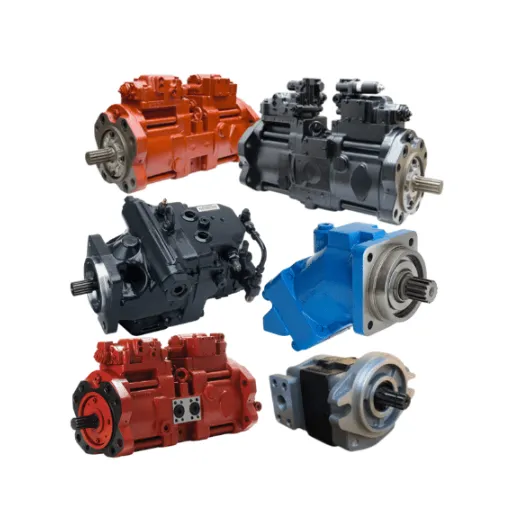
Tips for Enhancing System Efficiency
🔧 Predictive Maintenance is a Must
IoT sensors and data analytics for a predictive maintenance setup can just go a long way to ensure system efficiency. Hydraulic components, when monitored in real-time, early alert to wear and possible failure points. This helps reduce unplanned downtime and extend the useful life of critical components like pumps, valves, and actuators.
💧 Efficient Fluid Management
Best hydraulic fluids should be used, and their condition must be continuously monitored. Contaminated or age-worn fluid leads to inefficiencies, greater system wear, and higher energy consumption. Have the filtration system maintained on a regular basis and initiate a fluid analysis schedule to catch contamination at time.
⚡ Make use of Load Sensing Technology
Load-sensing hydraulic systems offer the feature of adjusting the power output automatically based on the load requirement. Hence, the system reduces wastage of energy by providing the flow and pressure output required at the time of demand according to real consumption needs, considering lower consumption of fuel and electricity and high efficiency of the system.
🎛️ Adopt Electro-Hydraulic Controls
Replaced with an electro-hydraulic system, traditional hydraulic systems must be combined with the precision of an electronic control system and hydraulic power. This integration provides energy management, reducing response time and enabling adjustments to system parameters on demand with great precision, which enhances overall performance.
📉 Lessen Pressure Losses
Pressure loss can drastically cut into the efficiency of the system with a poor piping layout, undersized conduits, or bad connections. Therefore hydraulic circuits must be very well designed to reduce pressure drops so that proper sizing of components and alignment during installation will be possible.
🌡️ Heat Exhaustion
High heat generation not only reduces the system’s efficiency but also damages the component. To deal with heat-related deviations of efficiency, heat exchangers must be installed, thermally stable fluids used, and hydraulic pumps be correctly sized to avoid overloading.
By keeping in view these standards, industries can maintain their hydraulic system’s peak efficiency, conserve energy, and reduce running costs-for an advantage in the new industrial scenario.
Tools and Techniques for Optimization
Therefore, attempts to optimize hydraulic systems should foremost be made by conducting periodic system audits aimed at identifying inefficiencies and potential points of failure. Such audits may include comprehensive diagnostic testing concerning flow, pressure, and temperature using flow meters, pressure sensors, and thermal imaging. These tests would detect losses, drops in pressure, and heat accumulation in the system. Therefore, by evaluating these, I can make sure that the system operates within acceptable parameters and does not suffer from devastating inefficiencies.
I am using advanced computational techniques such as fluid dynamics simulations and predictive maintenance algorithms. Fluid dynamics simulations can help to determine or predict the behavior of the system itself for a given set of operating conditions, and that can be used to make accurate alterations to the valve, pump, and heat exchanger themselves. Predictive maintenance, on the other hand, uses data analytics to keep track of the system’s performance in real-time and allows for early intervention in the case of wear-and-tear before it hinders functionality or leads to unforeseen downtime.
Lastly, energy efficiency and innovations in materials would be integrated into the system. For instance, variable-speed drives on pumps avoid the excessive loss of energy, while thermally stable, low-viscosity fluids lessen friction and heat generation. Use of high-efficiency filtration and sealing technologies further ensures longevity and consistency of the system. Thus, these measures assure maximum efficiency of the hydraulic systems, cost savings, and enhanced productivity.
Case Studies of Successful Hydraulic Systems
Case Study 1: Making Energy Efficiency Optimize Industrial Applications
A big manufacturing facility undertook comprehensive upgrades to its hydraulic system by fitting variable-speed pump drives and very efficient filtration units. Before the upgrades, the system was loading heavy energy losses, with maintenance requirements and output lost to overheating.
Varied-speed pumps were thus installed to substitute for the traditional fixed-speed pumps, and energy savings up to 35% were achieved. Thanks to state-of-the-art filtration technology, equipment life was extended by 20%, therefore cutting downtime and costs thereof.
This project has proven that, in certain cases, rapid investment returns can be made within 18 months, thus confirming the advantages gained from both an economic and operational aspect through modern hydraulic system solutions.
Case Study 2: Offshore Drilling Hydraulic System Upgrades
An offshore drilling installation suffered from hydraulic issues that included fluid contamination and pressure irregularities; these disrupted regular operations. Hence, the engineers worked on the system using innovative technologies for sealing and thermostable fluids to withstand extreme temperatures and prevent leaks.
Further predictive maintenance software was implemented through IoT sensors that act as feedback systems for monitoring performance and predicting system failure.
This upgrade increased operational productivity by 25% and reduced maintenance downtime by 40%. This example emphasizes how the novel technologies embody offshore engineering.
Case Study 3: Renewable Energy and Hydraulic Efficiency in Hydropower
The hydropower installation carried out a hydraulic system retrofit to improve energy generation efficiency. Replacement of outmoded control mechanisms for turbines was done with hydraulics actuated through digital means; the fluids used are biocompatible so as to be in actual concordance with environmental laws.
Real-time telemetry was incorporated for pressure and fluid monitoring in the new-age systems, which translated to a 15-percent increase in efficiency toward the energy conversion process.
Eco-friendly hydraulic fluids ensured that no threat of contamination existed during the operation of the equipment, thus complying with local and international norms on sustainability. This act was indicative of how hydraulic systems could be harnessed to procure energy in an environment-conscious and high-performance manner.
From the case studies, it is revealed that hydraulic system upgrades, when applied to specific operational problems, result in renewed vigor across dimensions of efficiency, reliability, and sustainability. This is irrefutable proof that the modernized design and newest technologies carry value to several other industries as well.
Sustainability and Environmental Impact
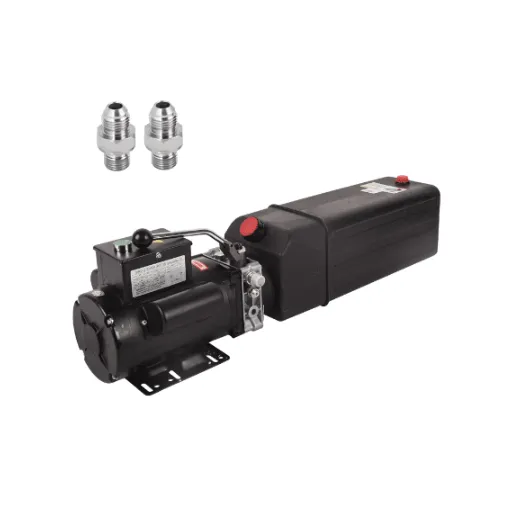
Reducing the Carbon Footprint of Hydraulic Systems
The reduction of carbon footprints in hydraulic systems embraces a multi-pronged approach, with the latest developments in technology, strategies for optimization, and innovations in materials standing at the forefront of solutions. Nowadays, hydraulic systems are built with more consideration to include those components that are the most energy efficient, such as variable-speed drives and motors of high efficiency, wherein the operation would include unnecessary energy consumption. Moreover, integrated control systems with sensors, together with real-time data analysis, are able to monitor performance and make fine adjustments during operation, avoiding energy loss.
Now, the use of biodegradable hydraulic fluids has turned into a great opportunity to prevent environmental damage. These fluids are made up of renewable resources and are supposed to degrade naturally without polluting the environment with harmful residues; this is important in case a leak occurs or the system fails. Also, retrofitting old systems with new, optimized components and closed-loop hydraulic circuits reduces any fluid loss and, therefore, emissions over time.
Recent studies underline the potential for hybrid solutions-for instance, coupling hydraulic and electric technologies to secure the most effective carbon reduction. Electric-hydraulic hybrid systems, for example, may capture energy during low-demand phases and finally release it during times when energy is demanded, thus supplementing the overall energy efficiency of industrial applications. An effective combination of any of these measures highlights how hydraulic innovation elevates the sustainability profile and yet assures utmost operational performance.
Hydraulics, with a prime focus on rigorous lifecycle assessment and departure from common fossil-fuel-based practices, could evolve unabated toward an even smaller carbon footprint, in accordance with global trapping of greenhouse gas reduction initiatives. They embrace environmental compliance standards and also provide a synergy for the increasing demand for environment-conscious systems in myriad sectors.
Benefits of Eco-Friendly Hydraulic Technologies
- 🌍 Reduced Environmental Impact
Eco-friendly type hydraulic systems use biodegradable and less toxic fluid-based systems; hence, the contamination chances toward soil and water bodies have been pretty much reduced. Recent studies show that by using environmentally acceptable lubricants (EALs), a reduction of about 70% in leakage occurrences has been observed, among others, thus providing compatibility with natural systems.
- ⚡ Energy Efficiency Improvements
Some of the new developments in environmentally friendly hydraulic technologies include energy recovery systems and variable displacement pumps to improve energy efficiency. The systems can reduce energy consumption by as much as 30 percent relative to conventional hydraulic systems, thus directly cutting operational costs and greenhouse gas emissions.
- 🔧 System Enhancement Duration
Thus, with the use of modern materials and sustainable technology in the build, eco-hydraulics diminish wear and tear, thereby extending service life. For instance, the high-performance hydraulic fluids that contain antioxidants will increase the lifetime of components by up to 50%, thus reducing maintenance.
- 📋 Conforming to Regulatory Norms
The deployment of eco-hydraulic systems ensures compliance with exacting environmental codes, such as the ISO 14001 standards, as well as localized legislative frameworks. Industries thus come to the forefront in sustainability, allowing the smooth passage of their operations while being spared the crossing of penalties from non-compliance.
- 🌱 In Support of Global Sustainability Initiatives
From an emission reduction viewpoint, environmentally friendly hydraulic technologies are in line with international initiatives such as the Paris Agreement. The changeover to such systems is part of a larger goal of net-zero emission achievement, critical for bringing about global changes needed for climate change impact.
Future of Sustainable Hydraulic Power Systems
In future years, sustainable hydraulic power deals will see the confluence of three factors: advanced technologies, environmental-conscious design, and so on. New technologies would include energy-efficient variable displacement pumps, closed-loop hydraulic circuits, and transitioning to biodegradable hydraulic fluids. The simultaneous usage of IoT technology aids in enhancing operational efficiency by providing predictive maintenance and real-time monitoring of hydraulic systems.
Furthermore, the development of hybrid hydraulic systems that combine renewable energy sources such as solar or wind with the traditional hydraulic operating mechanism indicates the progressive pathways of sustainability. Recent figures show that the use of hybrid systems can reduce energy consumption by 30% and help reduce carbon emissions.
Increased regulations and incentives are promoting sustainable processes in industries that depend on hydraulics, particularly manufacturing, construction, and agriculture. For example, emission standards laid out in global agreements such as the Paris Agreement are, at least indirectly, pushing manufacturers to phase out older systems in favor of greener solutions.
Going forward, materials science, with carbon fiber composites and lightweight recyclable materials, can help cut down the environmental impact of hydraulic systems further. In this way, by linking innovation and sustainability goals, the hydraulic industry is navigating through some of the most pressing environmental issues, thereby creating new avenues for bringing improved levels of performance and reliability in their systems.
Frequently Asked Questions (FAQ)
Q: What are the benefits associated with hydraulic power optimization of the pump?
By carrying out this optimization, the power of a pump is properly utilized, thereby increasing the overall efficiency of the hydraulic system and improving the hydraulic system’s power. It saves energy and costs, increases the longevity of hydraulic pumps, and assures uninterrupted operation.
Q: How can I find the best pump for my hydraulic system?
Dissatisfactions that drive pump selections are pump type, pressure requirements, and hydraulic applications. The answer lies in knowledge of these basic hydraulic system considerations so that you can choose the pump that best suits the system for performance and hydraulic force optimization.
Q: What is the function of hydraulic pumps in the power industry?
Hydraulic pumps are therefore very much an essential ingredient in the power industry to convert mechanical energy into hydraulic power-so as to operate any hydraulic tools and heavy machinery. If hydraulic pumps perform more efficiently, companies operating such equipment could, by and large, improve their production efficiency and save on energy costs.
Q: How does pump system optimization enhance efficiency?
In a nutshell, a pump system optimization improves efficiency by putting under analysis the hydraulic system components so they can be adjusted to perform harmoniously. This also ensures that the motor and pump arrangement is such as to provide higher hydraulic pressure and hence better hydraulic equipment performance.
Q: What are the common problems of hydraulic pumps?
Cavitation, leaking, and improper pump sizing are common issues experienced with hydraulic pumps. These problems cause hydraulic systems to be of lesser hydraulic efficiency and performance, thus drawing attention toward the necessity of uniform power and frequent maintenance of hydraulic systems.
Q: How could advances in hydraulic pump technology help users?
Developments in hydraulic pump technology provide greater power and higher efficiency, resulting in hydraulic systems that are far more reliable and economical. By allowing for improved energy recovery systems and enhancing the performance of hydraulic pumps, such technologies increase productivity and cut down on operational costs.
Q: What is the significance of hydraulic efficiency in a hydraulic system?
Hydraulic efficiency plays a key role in any hydraulic operation. It refers to the ability of a hydraulic system to convert energy into hydraulic power. The more efficient a hydraulic system is, the less energy losses or dissipations it experiences; correspondingly, more energy will be available to the system to efficiently perform smooth operations and meet the requirements of different application loads.
Q: What should I consider for the maintenance of hydraulic systems?
During maintenance, always check for fluid levels, leaks, and system pressure. Ensure the pump and motor are operating correctly and their performance is optimized to avoid common problems in hydraulic equipment.
Q: How do pumps convert mechanical energy in hydraulic systems?
The pumps convert mechanical energy into hydraulic energy by means of rotating elements, creating the hydraulic pressure. This process is the basic principle of hydraulic systems, where hydraulic pumps supply the power and force needed for several applications ranging from industrial machinery to mobile equipment.
🚀 Ready to Optimize Your Hydraulic Systems?
Implementing these hydraulic power optimization strategies can significantly improve your system’s efficiency, reduce operational costs, and contribute to environmental sustainability. Start with a comprehensive system audit and gradually incorporate the latest technologies for maximum impact.



